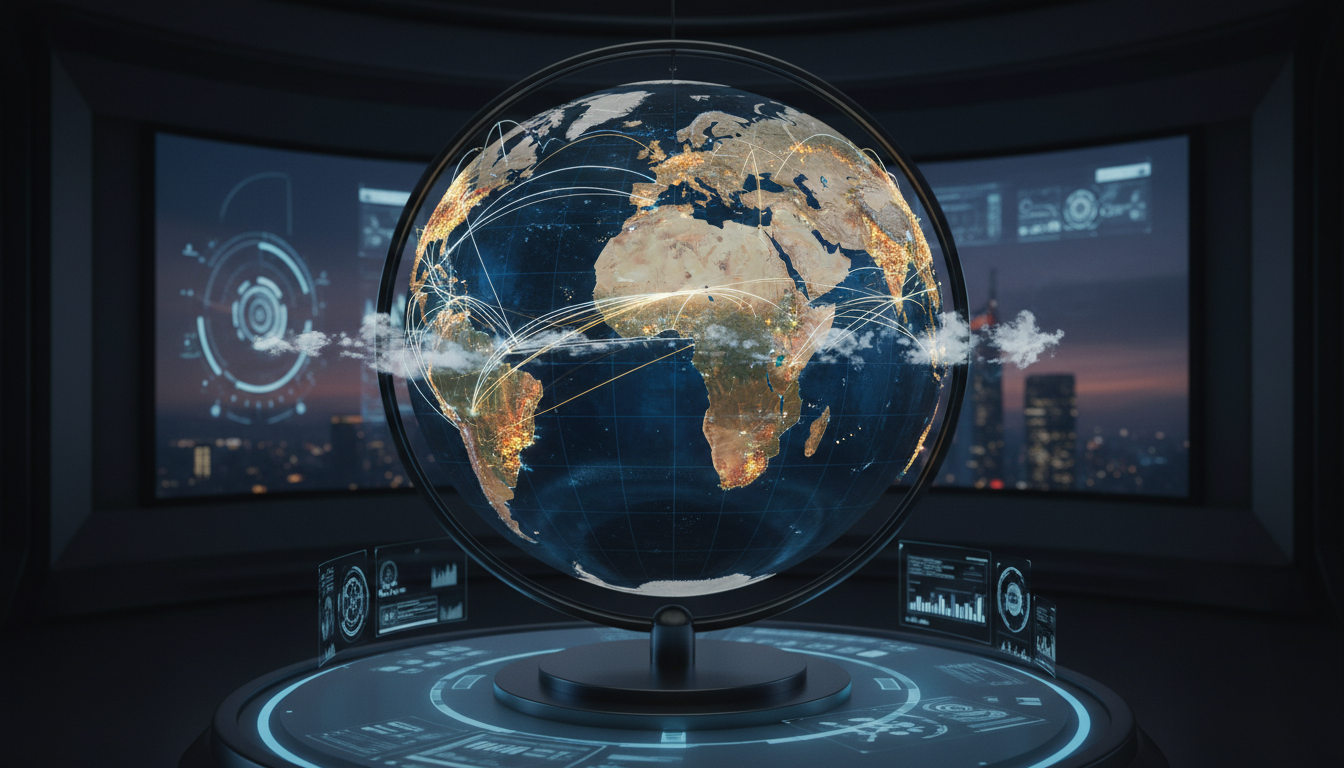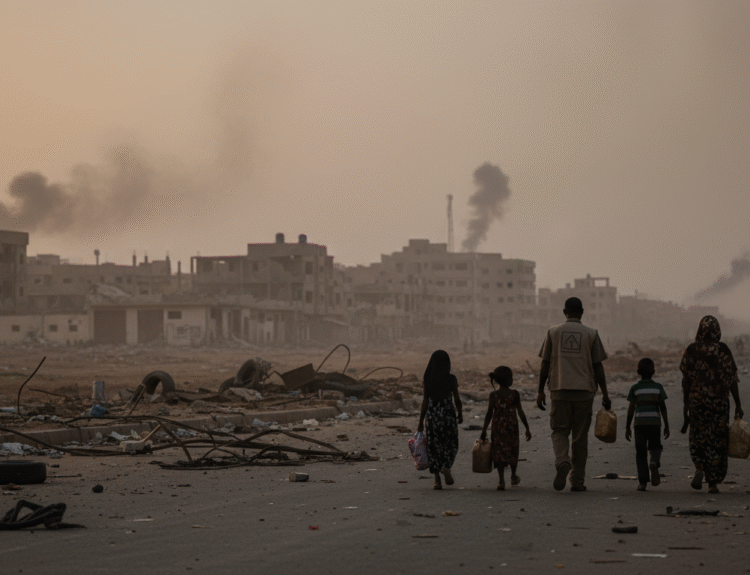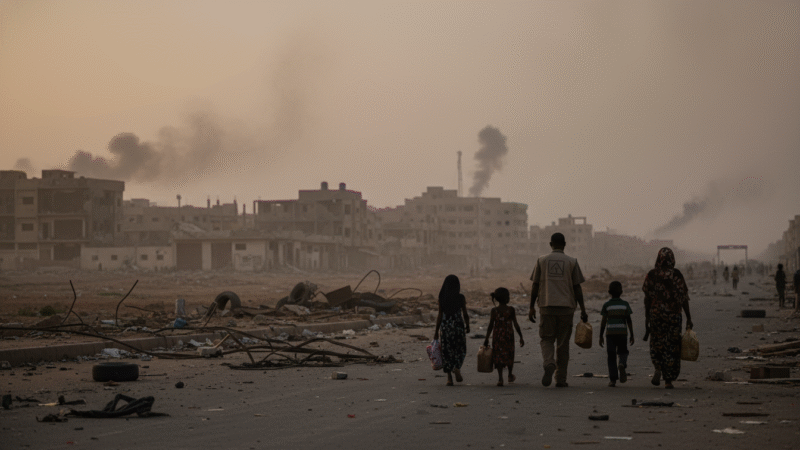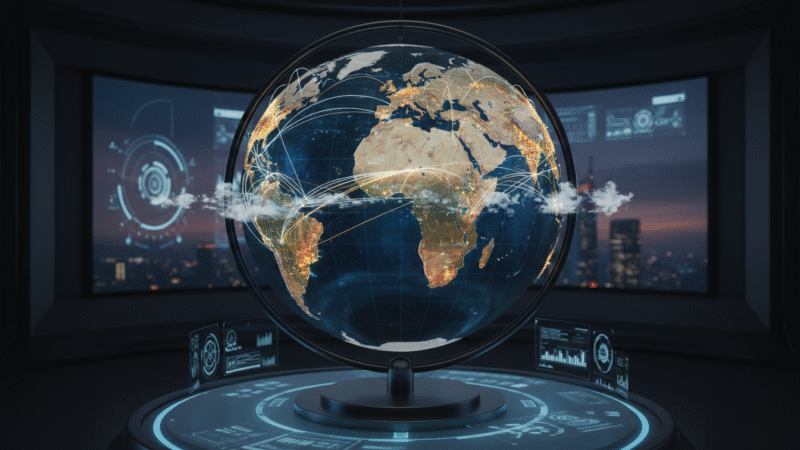In the span of a few years, the world has moved from assumptions of stable globalization to a more fragmented, risk-heavy, and multipolar order. Great-power rivalry is resurfacing, supply chains are being redrawn, climate shocks are accelerating, and artificial intelligence is introducing new strategic and ethical dilemmas. For readers trying to make sense of today’s “polycrisis,” this article maps the key fault lines and offers a practical lens to understand where the world may be heading next.
“History is not a straight line; it spirals. Old patterns return with new technology and new stakes.” — Contemporary geopolitical maxim
The Rise of Multipolarity
For three decades after the Cold War, the world was loosely unipolar—economically integrated, with the U.S. as the dominant power. Today, multiple poles are shaping outcomes: the U.S., China, the European Union, India, and influential regional actors such as Turkey, Brazil, Gulf states, and ASEAN.
- Trade blocs are hardening, but interdependence remains—especially in advanced manufacturing and services.
- Regional organizations (ASEAN, African Union, GCC, Mercosur) increasingly shape rules from digital policy to green finance.
- Power is now “networked”: standards bodies, chip consortia, cloud platforms, and payment rails matter as much as tanks and ships.
“Multipolarity doesn’t mean disorder by default; it means more negotiation, more venues, and more veto points.” — Policy scholar paraphrase of current research consensus.
Economic Fragmentation and Supply Chain “De-Risking”
The term of the moment is de-risking rather than decoupling. Governments and firms are diversifying suppliers, inventory buffers, and logistics routes after a decade of just-in-time vulnerabilities.
Key trends:
- Nearshoring and “friend-shoring” to Mexico, Eastern Europe, North Africa, and Southeast Asia.
- Dual supply chains for sensitive technologies (chips, telecom, cloud).
- Cross-border investment screening and export controls in critical tech.
What to watch:
- Semiconductor choke points: lithography equipment, advanced nodes, materials.
- Medical supply resilience: APIs, generics, protective gear.
- Shipping lanes and chokepoints: Red Sea, Strait of Hormuz, South China Sea.
Wars, Security Realignments, and Defense Spending
Conflicts in Ukraine and the Middle East, along with tensions in the Indo-Pacific, are reshaping security doctrines and budgets.
- NATO members are moving toward or above 2% of GDP in defense spending, with renewed focus on industrial base capacity and munitions.
- European security autonomy debates have intensified alongside transatlantic coordination.
- Indo-Pacific minilaterals (QUAD, AUKUS) reinforce deterrence and tech cooperation.
AI, Cyber, and the Battle for Digital Sovereignty
Artificial intelligence is moving from experimental to operational across defense, industry, health, and government. Alongside opportunity comes risk: disinformation, workforce transitions, and concentration of power in foundational models and compute.
- Regulatory divergence: the EU AI Act emphasizes risk tiers and transparency; the U.S. approach blends executive actions with sectoral guidance; China maintains algorithmic and platform controls.
- Compute geopolitics: access to cutting-edge chips, data centers, and energy supply for training frontier models is becoming strategic.
- Cyber operations and election integrity: AI-enabled influence campaigns and deepfakes raise new challenges for democracies.
“AI is not just a technology race—it’s a governance race.” — Common refrain among AI policy leaders
Climate Stress as a Risk Multiplier
Climate is no longer a distant scenario—it’s a present-day macro risk shaping migration, food security, health, and fiscal stability.
- Heat and drought affect crop yields and grid reliability; extreme weather strains public budgets and insurance markets.
- Adaptation finance needs far exceed current flows to vulnerable countries; loss-and-damage funding mechanisms are nascent.
- Health impacts—from heat stress to vector-borne disease—are rising.
The Global South’s Center Stage
Countries across Africa, Latin America, the Middle East, and Southeast Asia increasingly act as agenda-setters, not mere rule-takers.
- Non-alignment 2.0: Many states avoid binary choices, pursuing flexible partnerships in trade, infrastructure, and defense.
- Debt and development: Debt restructuring frameworks are evolving, with calls for multilateral reforms and scaled-up climate and adaptation finance.
- South-South cooperation: Technology transfer, digital public infrastructure, and payments innovation (e.g., real-time rails) gain momentum.
Energy Transition: From Fuel to Minerals
As economies electrify, the strategic map shifts from oil and gas to critical minerals and grid infrastructure.
- Demand growth for lithium, nickel, cobalt, copper, rare earths; pressure to ensure responsible mining and traceability.
- Grid is the new bottleneck: permitting, transmission buildout, and flexible demand.
- Energy security now includes storage, hydrogen, and long-duration solutions—plus resilience to climate shocks.
“The 21st-century energy race is a grid-and-minerals race.” — Energy transition analysts
What This Means for You: Practical Takeaways
- Diversify exposure: Whether you’re an investor, policymaker, or business leader, avoid single-point dependence in suppliers, data centers, or regulatory regimes.
- Build risk intelligence: Track geoeconomic indicators—export controls, sanctions, shipping security alerts, climate stress indices.
- Invest in resilience: Cyber posture, disaster recovery, and climate adaptation now sit alongside financial and operational resilience.
- Engage standards early: From AI safety to carbon accounting, rules are being set in technical forums—participation matters.
- Talent strategy: Cross-train teams on geopolitics, cyber, AI governance, and climate risk; recruit locally to navigate regulatory nuance.
FAQs
Q1: Is globalization ending?
A: Not ending, but reshaping. Trade volumes remain high, yet more regionalized and controlled, especially in critical tech and energy. See WTO.
Q2: Which regions are best positioned in a multipolar world?
A: Economies with political stability, logistics connectivity, human capital, and clear digital/climate policies—parts of ASEAN, the Gulf, and some Latin American and African hubs—are attracting investment. See World Bank, IMF.
Q3: How fast will AI regulation converge?
A: Expect partial convergence on safety, transparency, and critical-use cases, but persistent regional differences in enforcement and scope. See OECD AI and NIST.
Conclusion and Recap
We’re entering a durable era of multipolarity defined by strategic competition, selective interdependence, and systemic risks from climate to cyber. The most resilient actors will be those who diversify dependencies, engage in standard-setting, and embed risk intelligence across strategy. While uncertainty is high, the opportunity for constructive cooperation—in climate adaptation, global health, AI safety, and sustainable finance—remains significant. In a networked world, power accrues not just to those who command resources, but to those who can convene and coordinate.









